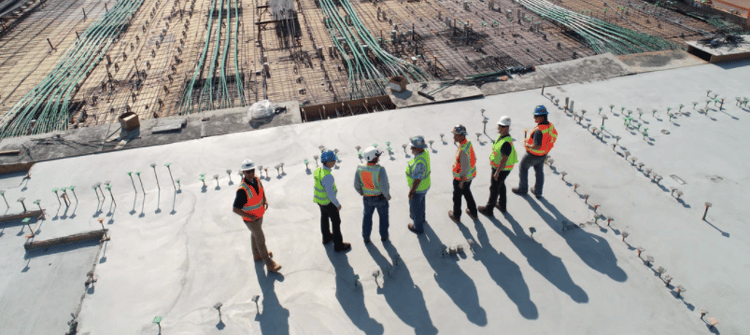
Cash flow management is crucial in the construction industry. Often, it is what determines if a company will stay in business or not. A construction company that effectively manages its cash flow will be able to predict periods of cash shortages and plan its operations accordingly. Better cash flow management also means the company has more room to grow and expand, and therefore more cash coming in.
However, especially in construction, cash flow management is not always easy. Most companies manage several projects at the same time, each with a different budget, schedule, and work scope. Furthermore, fierce competition and an increase in the price of raw materials are additional challenges to construction owners. It is the primary goal of a construction business owner to make sure the company is generating enough cash. It is critical that any issues that negatively affect the company’s cash flow are immediately addressed.
What is cash flow in construction?
In construction, cash flow refers to the ability to meet payroll, pay vendors, and fund projects. It's not just limited to building contractors; it applies to anyone who has employees or contracts with suppliers. The most common way to measure cash flow is to use a simple formula called "net profit." Net profit equals revenue minus expenses.
Why is cash flow important in construction?
Cash flow is an essential part of building projects because it helps determine whether the project will be completed on budget and within schedule. It's also important to understand why this is so. The first reason is that cash flow is used to pay all expenses related to the project. These include everything from materials to labor costs. The second reason is that cash flow allows contractors to plan their work ahead of time. They know exactly when they'll need more money and when they'll receive payment.
How can construction companies improve cash flow?
Construction companies should be aware of their cash flow needs. They need to know when they will receive payment for work completed so they can plan accordingly. They should also be prepared to handle unexpected costs such as delays in payments or unforeseen expenses. To ensure that they don't fall behind on payroll, they may want to consider hiring an outside accounting firm to manage their finances.
Factors affecting cash flow in construction
Here are the top factors that affect cash flow in construction:
1. Inaccurate project bidding
The first step in a construction project’s cycle is the bidding process. In this phase, managers estimate the project’s revenue, expenses, and profit margin, and then price their bid accordingly. If accepted, this amount becomes the contract’s value, and the maximum amount of cash a project generates.
This is why it is crucial that construction managers accurately determine their revenue and expenses. A mistake in estimating a project’s costs can have a serious and negative effect on its cash flow. A contractor will simply not be paid extra amounts regardless of how much it costs them to get the job done. This may translate to the project taking from the company’s cash reserves, placing unwanted financial stress on the company.
Some owners may take on projects with little profit markups due to fierce competition and few bidding opportunities. Sacrificing profit to take more work almost always means a negative cash flow, as the profit markup may also be used to cover any contingencies or sudden expenses. With a very small profit margin, a project may at best break even or have a negative cash flow and leave a large room for error.
2. Unexpected change orders
Another unique aspect to the construction industry is change orders. Change orders are official changes made to the original scope of work of a project. Although they are a routine part in construction projects, poor change order management will significantly hurt a project’s cash flow.
Change orders might assign more work to a contractor. While this may sound like an opportunity for an increased profit and cash inflow, additive change orders are often risky and come with increased expenses to the contractor. On the other hand, a change order may reduce a project’s original scope of work. Not only does this decrease the contract’s value and revenue, but it also disrupts the project’s estimated cash flow, especially if the contractor has already committed resources to the work.
To keep a project’s cash flow consistent, a contractor must quickly manage and process change orders. They must also try to negotiate any changes that will negatively impact the project’s profitability and cash flow.
3. High payroll expense
Overhead expenses, especially payroll, are known to be a big burden for most construction projects. Payroll is a major expense, often accounting for 30% of a project’s value, and must be paid in cash every two weeks.
To deal with this large outflow of cash, some companies outsource their labor. Because subcontractors can wait, construction managers sign back-to-back agreements with their subcontractors, where they pay once they’re paid. This brings stability to a project’s cash flow.
4. Progress payment retention
Most construction projects are subject to retention, especially in complex, high-cost, and lengthy projects. To ensure projects are done well, owners withhold a percentage from the progress payments until the job is complete or the requirements are met. Retention affects a project’s cash flow in a negative manner. The bigger the amount retained, the less cash coming in. For contractors, retention translates to partial and delayed payments, which may greatly hurt their cash flow.
Moreover, retention may not always be easily released. Sometimes, disputes may arise between a contractor and the owner if they have different views on the completion of the project. In extreme cases, retention is not released at all, and the contractor risks simply losing the money. This is why it’s crucial that it is classified in contract terms, to ensure that the owners will get paid in full. Similarly, contractors in some states like California and Texas where there are strict lien laws must always ensure that the necessary preliminary notices are filed so their right to file a mechanics lien is preserved in case of payment delays or non-payment.
Conclusion
Construction companies deal with several projects and hope to land as many bids as possible to increase their revenue. Even if a construction business is awarded the contracts, without proper cash management, the company risks putting itself in a tough financial situation. Regulating a project’s finances and addressing the cash flow challenges in the construction industry ensures profitability for the business.
About the Author:
Patrick Hogan is the CEO of Handle.com, where they build software that helps contractors, subcontractors, and material suppliers with late payments. Handle.com also provides funding for construction businesses in the form of invoice factoring, material supply trade credit, and mechanics lien purchasing.












